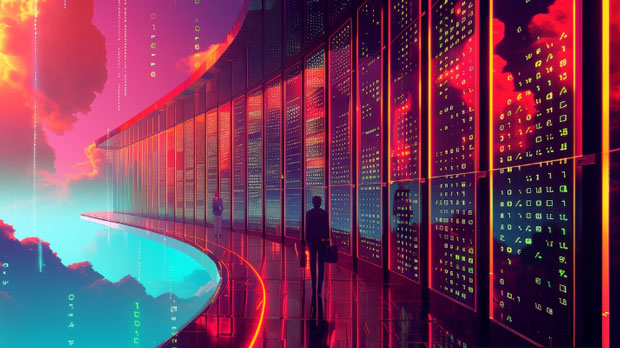In today's fast-paced digital world, achieving optimal performance in high-concurrency tasks is a critical aspect of any online service, particularly when it comes to proxies. The ability of HTTP proxies to handle large volumes of concurrent requests efficiently can significantly impact the performance and scalability of web applications, services, and systems. This article will delve into the performance of two popular HTTP proxy solutions— PYPROXY and RapidSeedbox—when handling high-concurrency tasks. We will explore their strengths, weaknesses, and real-world applicability in various high-load environments to determine which offers the best performance for users in demanding scenarios. Introduction: Understanding the Role of HTTP Proxies in High-Concurrency TasksHTTP proxies are a fundamental component in network management, providing users with enhanced privacy, security, and access to geographically restricted content. In high-concurrency environments, such as those involving large-scale data scraping, online gaming, or cloud computing, the ability of proxies to handle multiple simultaneous connections is vital.When dealing with high-concurrency tasks, the proxy must not only facilitate smooth and stable connections but also manage increased demand without significant slowdowns, downtime, or packet loss. This is where solutions like PyProxy and RapidSeedbox come into play. Both have unique features designed to cater to high-performance tasks, but how do they compare when subjected to rigorous testing?PyProxy: Overview and Performance in High-Concurrency EnvironmentsPyProxy is a flexible and highly configurable HTTP proxy solution that excels in handling high-concurrency workloads. It is built with the Python programming language and leverages its robust libraries and frameworks to optimize task execution. In a high-concurrency environment, PyProxy can process thousands of simultaneous connections without significant degradation in speed or reliability.The main strength of PyProxy lies in its ability to manage large-scale data requests efficiently. Its support for asynchronous processing allows it to handle tasks concurrently, making it a preferred choice for developers dealing with real-time data scraping or API testing where multiple requests need to be handled in parallel.However, while PyProxy excels in scalability, it may face challenges under extremely high loads, especially in resource-constrained environments. The proxy's performance is heavily dependent on the underlying system's capabilities, such as CPU power, memory, and network bandwidth. In very high-concurrency tasks, PyProxy might experience occasional lag, though this can be mitigated by optimizing system configurations.RapidSeedbox: Overview and Performance in High-Concurrency EnvironmentsRapidSeedbox is another powerful HTTP proxy solution, known for its speed and stability under heavy traffic. Unlike PyProxy, which relies on Python and asynchronous programming, RapidSeedbox uses a more specialized architecture optimized for high-performance network tasks. It is often used in environments requiring rapid data transfers and the ability to maintain consistent performance even when handling numerous simultaneous requests.One of the standout features of RapidSeedbox is its advanced load-balancing mechanism, which distributes tasks across multiple servers to prevent any single node from being overwhelmed. This is particularly beneficial in high-concurrency scenarios where large numbers of requests are expected. The proxy's robust design allows it to perform well under sustained heavy traffic, with minimal impact on response times.Despite its strong load-balancing capabilities, RapidSeedbox may not be as customizable as PyProxy. It is more of a "plug-and-play" solution, meaning it might not offer the same level of control or flexibility for developers who need fine-grained control over proxy configuration.Performance Comparison: PyProxy vs RapidSeedboxTo compare PyProxy and RapidSeedbox, we must consider several key factors that affect performance in high-concurrency environments, such as scalability, latency, throughput, and system resource usage.- Scalability: Both solutions offer good scalability, but PyProxy may require more customization to optimize performance under high-concurrency loads. RapidSeedbox, with its built-in load-balancing system, provides a more straightforward solution for users dealing with massive request volumes.- Latency: PyProxy tends to have lower latency in low-to-medium load situations, thanks to its lightweight design and asynchronous architecture. However, as the number of concurrent requests increases, latency can rise. RapidSeedbox, on the other hand, maintains relatively stable latency even under high load due to its distributed architecture.- Throughput: In terms of throughput, RapidSeedbox tends to outperform PyProxy in high-concurrency tasks, thanks to its ability to handle requests across multiple servers and efficiently distribute the load. PyProxy's throughput is dependent on the system's configuration, and while it can handle large volumes of traffic, it may need optimization for sustained high-concurrency tasks.- Resource Usage: PyProxy can be more resource-intensive compared to RapidSeedbox, especially when scaling to large concurrency levels. RapidSeedbox, due to its more specialized architecture, is optimized to use resources more efficiently in high-load situations.Real-World Use Cases and ApplicabilityWhen choosing between PyProxy and RapidSeedbox for high-concurrency tasks, it is essential to consider the specific needs of the task at hand.- Data Scraping: If your high-concurrency task involves web scraping, PyProxy's flexibility and customization options make it an ideal choice. Its support for multiple proxy configurations and ability to handle large numbers of simultaneous requests give it a distinct edge in this scenario.- Gaming or Streaming: For tasks such as gaming or streaming, where latency and stability are crucial, RapidSeedbox's load-balancing features and consistent performance under heavy traffic make it the better choice.- API Testing: If you're testing APIs or need to simulate thousands of simultaneous requests, PyProxy may be more suitable due to its lightweight and scalable nature. However, RapidSeedbox's robust performance under high traffic can handle API tests with higher traffic requirements with ease.Conclusion: Which Proxy Solution Performs Best in High-Concurrency Tasks?Both PyProxy and RapidSeedbox have their strengths in high-concurrency environments. PyProxy is highly customizable and scalable, making it ideal for developers who need flexibility in their proxy setup. However, it may require more system resources and optimization for extremely high-concurrency tasks.On the other hand, RapidSeedbox shines in its out-of-the-box performance, offering stability and consistency even under heavy traffic. Its advanced load-balancing mechanism makes it an excellent choice for high-concurrency tasks that require sustained throughput and low latency.Ultimately, the best choice between PyProxy and RapidSeedbox depends on your specific use case. If flexibility and customization are your priorities, PyProxy may be the better option. However, if you need a proxy that can handle large volumes of concurrent traffic with minimal configuration, RapidSeedbox is the solution to consider.
Sep 18, 2025



































































